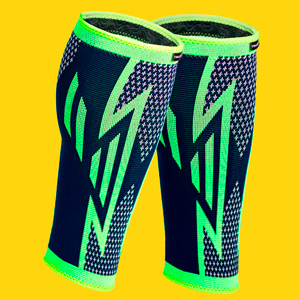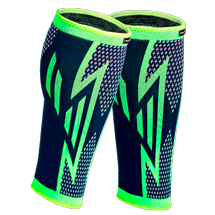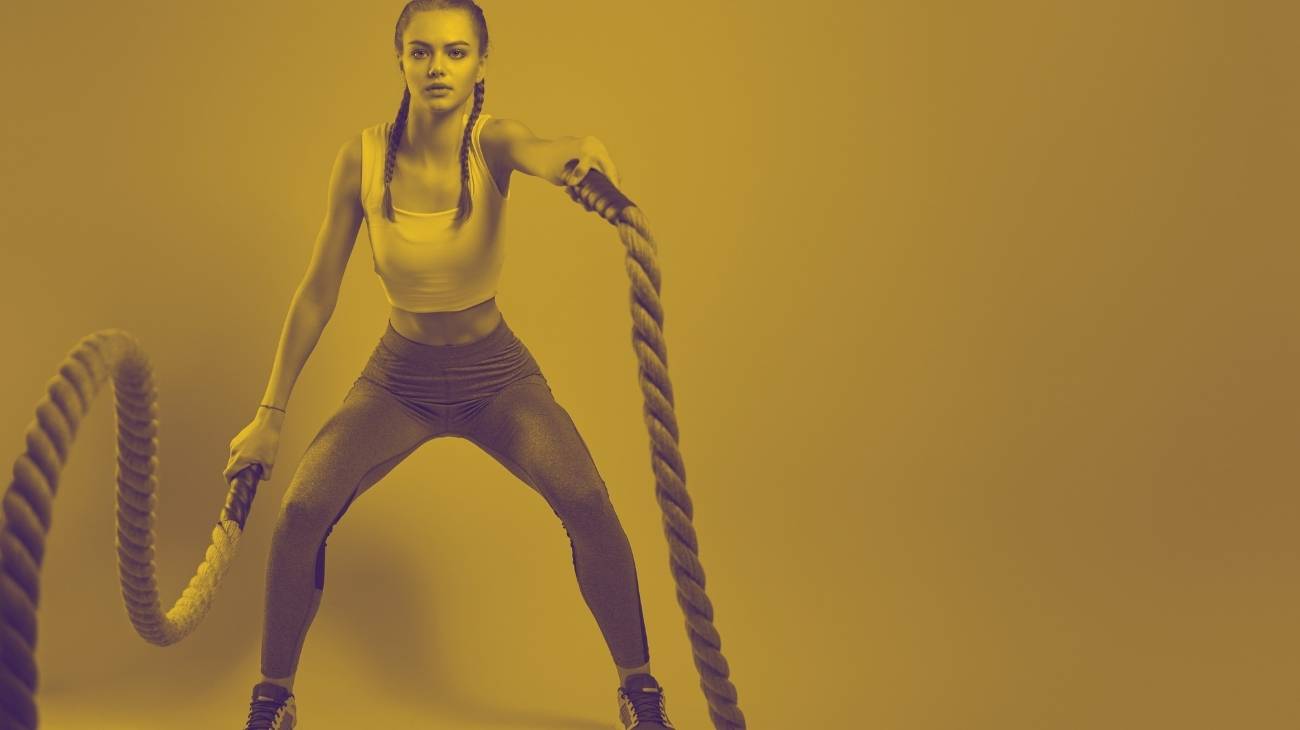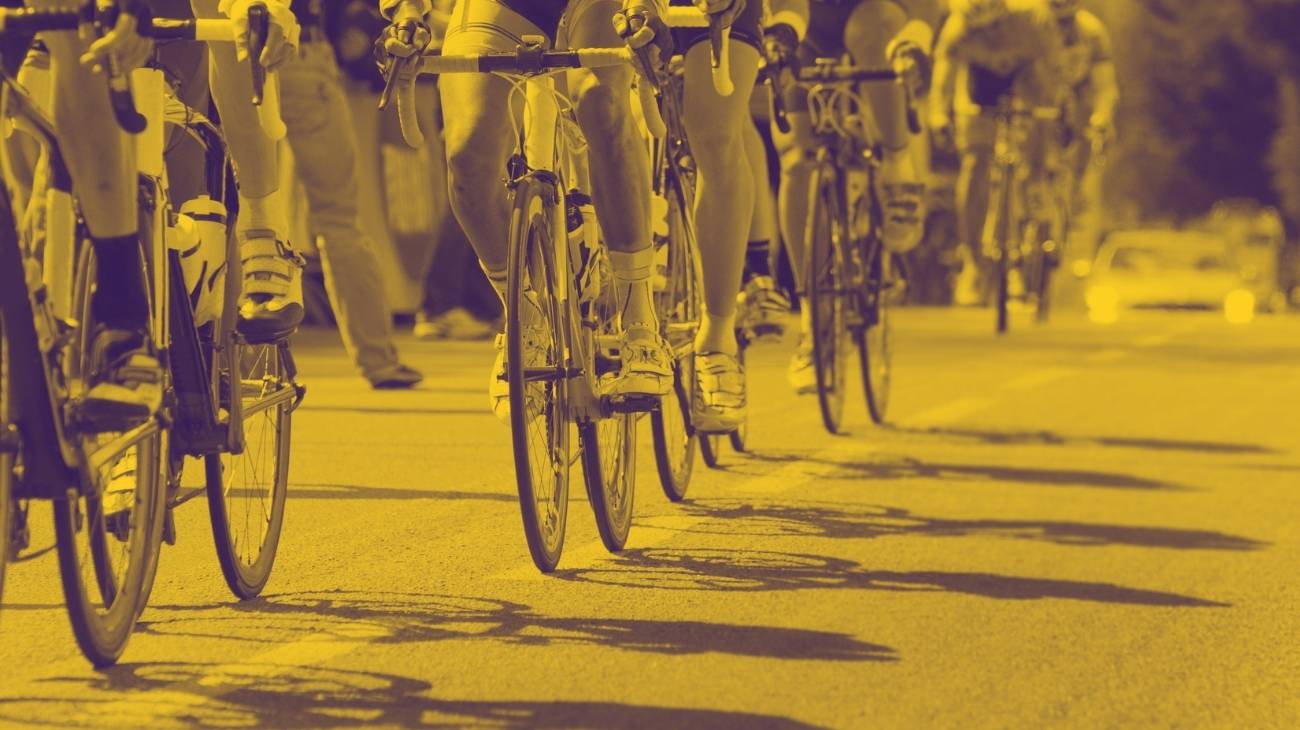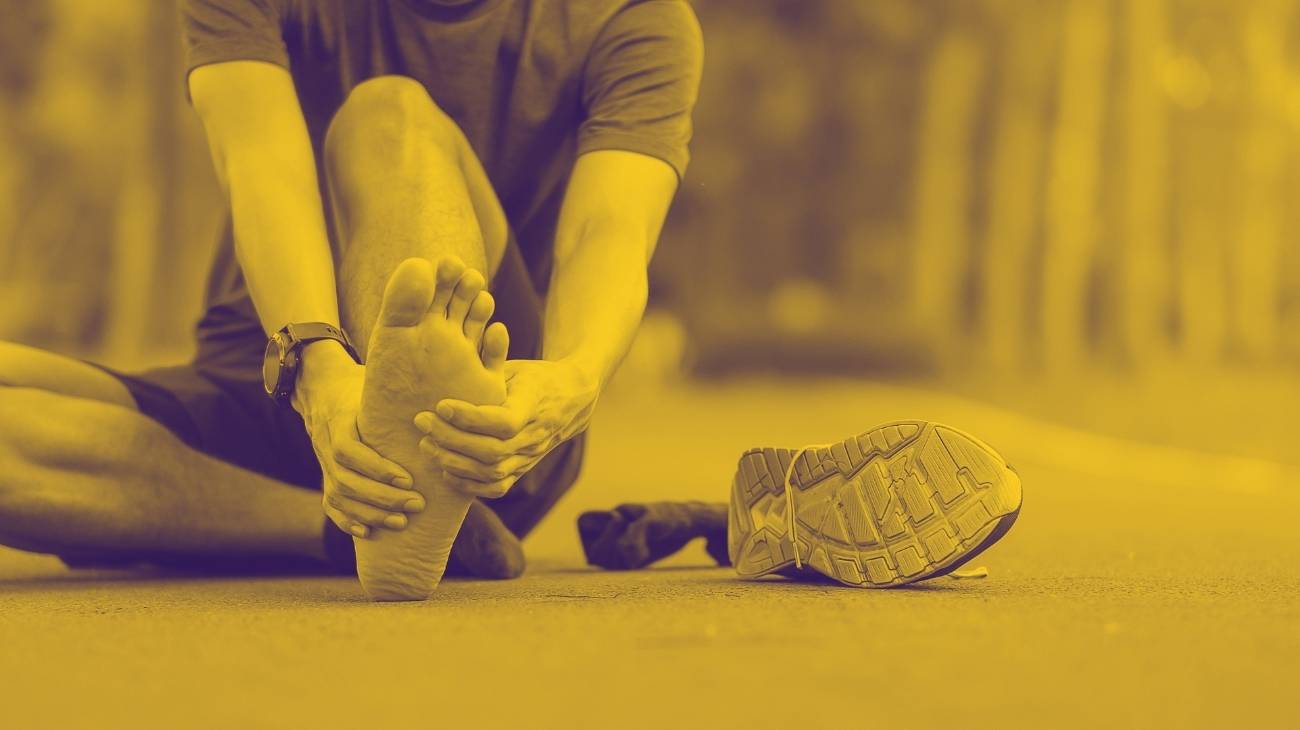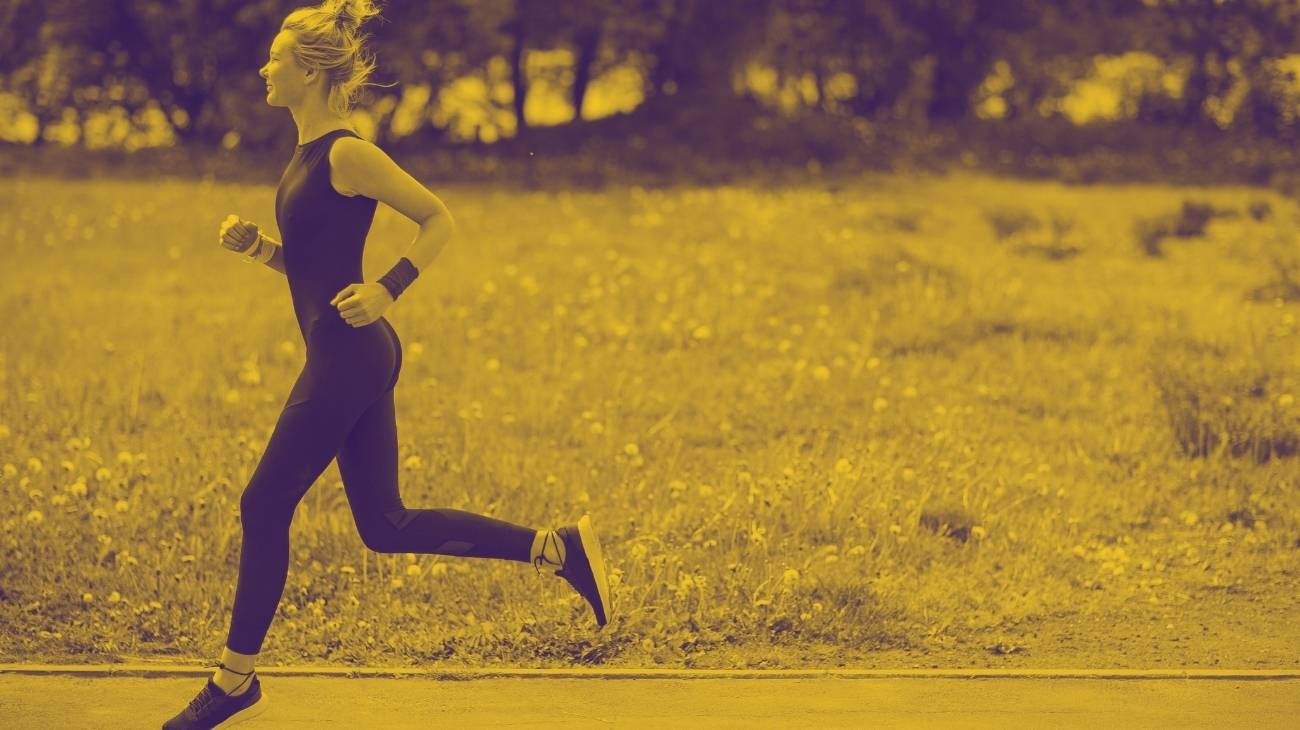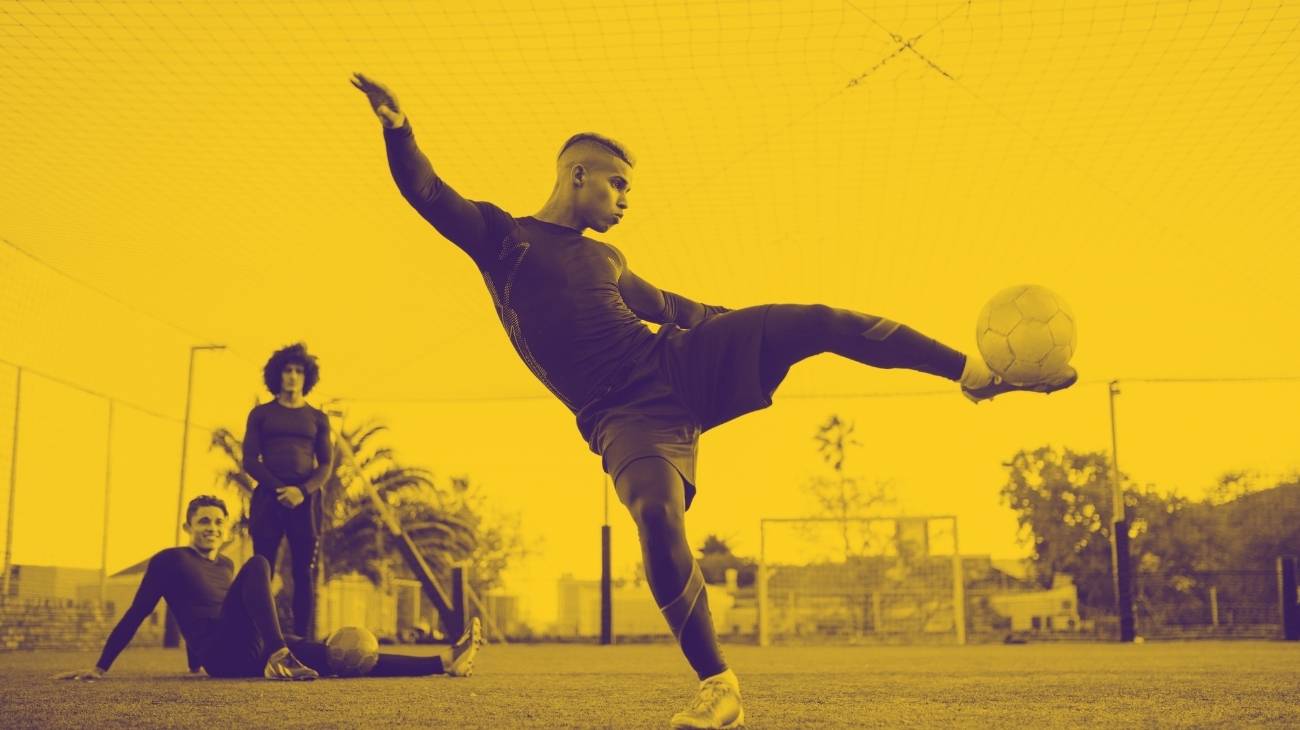- What is the best compression socks for running?
- Video: Muscle calf anatomy
- Types of compression socks you should know about
- What are the most common running injuries?
- Buying guide: Tips on how to buy the best compression socks for running
- Advantages and benefits of calf braces for runners
- Can compression socks really improve the performance of runners?
Running is a sport that is characterized by its worldwide distribution. Because it improves health, reduces the risk of disease and strengthens bones and muscles, more and more people are starting to run.
However, it can also have undesirable effects on health, as it sometimes leads to injuries. It is therefore important that runners wear appropriate protective equipment to avoid these conditions. This mainly involves compression socks and calf sleeves.
What is the best compression socks for running?
- Sizes: S-M-L-XL
- Colors: Green, Pink and Grey
- Material: Breathable
- Nº of Products: 2 pieces
- Uses: Rehabilitation and sport
- Elastic Fabric
- Double Anti-Slip Silicone
- Ergonomic & Adjustable
- Sport Design
- Unisex
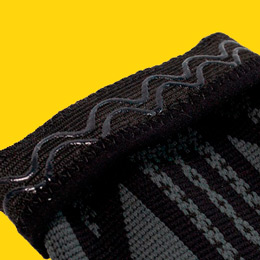
Double Silicone Anti-slip
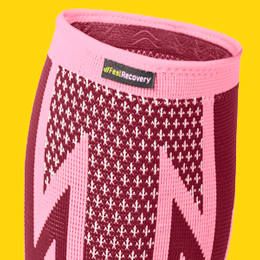
Elastic Fabric
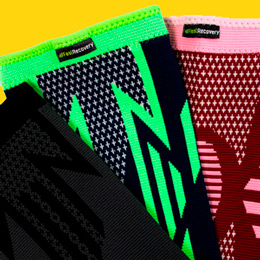
Various Colors and Sizes
- High compression
- Quality materials
- Variety of designs and colors
- Lightweight design
- Delicate wash
- Small sizes
It can be used by any type of person because its unisex sizes are designed to strengthen the Achilles tendon and provide greater blood circulation to the areas that generate fatigue in the feet. It is ideal for rehabilitation, traveling, avoiding swelling during pregnancy and playing sports. The elastic running sleeve may be uncomfortable and not very useful in calves with advanced tears.
- Sizes: S(10"-12.5")-M(12.5"-15")-L(15"-18")-XL(18"-21")
- Colors: 3 Options: Black, Blue, Pink
- Material: Nylon, Lycra
- Nº of Products: 2 Pairs
- Type: Sleeve
- Good compression
- 2 For any activity
- For any activity
- Anti-slip strap
- Delicate wash
- Large sizes
The pair of socks that we present to you is suitable to be worn by both men and women, thanks to its different sizes that easily adapt to the anatomy of the leg. Its fabric side supports provide greater comfort and support during training at the gym or at work. It is important to keep in mind that the use of this calf support can accumulate sweat in summer or high temperatures.
- Variety of designs and colors
- Quality materials
- Few sizes
The upper compression band acts as a patellar support to protect the meniscus and cruciate ligaments. The gradual pressure, originated by the design of the fabric, generates the same stability as a kinesiology bandage, so the athlete's performance increases considerably. Please note that the compressive elastic splint may generate itching and tingling sensation in some users.
- Sizes: S-L-XL(14-16in)-XXL(16-22in)
- Colors: 4 Options: Gray, Black, Blue, Pink
- Material: Breathable
- Nº of Products: 2 Pack
- Type: Sleeve
- Good compression
- Ergonomic design
- Variety of designs and colors
- Quality materials
- Not machine washable
- Does not specify material
The support provided to the calf by this compressive brace stimulates blood circulation, making it possible to combat foot fatigue and varicose vein pain. The double stitching of the lightweight fabric does not cause irritation, but it is important to know that, in some cases, the feeling of leg fatigue does not diminish with the use of this compressive garment in the short term.
- Sizes: S(13")-M(14")-L(15"-17")-XL(17"-19")
- Colors: 4 Options: Beige, Black, Blue, Pink
- Material: Nylon
- Nº of Products: 2 Pack
- Type: Sleeve
- Graduated compression
- Variety of designs and colors
- For any activity
- Quality materials
- Delicate wash
- Too bulky
The increased stability and compression are generated by the specially designed back support, with an adaptable fabric, which is located right at the calf. The fabric material, made of high quality breathable yarn, is prepared to cushion the impacts of jumps and avoid injuries to the Achilles heel. You should consider that, in some specific cases, the compression sleeve does not relieve pain or reduce cramps.
- For any activity
- Three compression zones
- Breathable
- Natural Carbonized Bamboo
- Only one size
- Delicate wash
- Only one per order
Its structure consists of three compression zones strategically distributed to achieve greater stability in the calf and shin. The silicone material and the technology applied to regulate heat and eliminate odors, make this compression sleeve one of the most sought after by athletes. If you are not accustomed to wearing a brace, be aware that compression may cause lack of sensitivity in the feet and increase muscle pain in the calves.
- Good compression
- Improves circulation
- Quality materials
- Lightweight design
- Only one size
- Delicate wash
Its different sizes, for men and women, can be used in both legs thanks to its ergonomic design adapts easily to any person. It facilitates the elimination of odors due to its composition of active copper that is president in the fabric of the cufflink, but you do not have to forget that the quality of the materials can cause irritation in sensitive skins.
- Sizes: S(13.7-15in)-M(15.7-17in)-L(17.3-19in)
- Colors: 14 Options
- Material: Nylon
- Nº of Products: 2 Pack
- Type: Sleeve
- Good fit and compression
- Variety of designs and colors
- Few sizes
It is ideal for helping blood circulation when you spend a lot of time on your feet, but best of all, its gradual compression allows the right fit to support the ligaments and stabilize the Achilles tendon. You can wear it in high temperature environments because its moisture wicking technology prolongs wear time. Please note that in some cases the elastic compression sleeve may not provide the compression needed by certain athletes.
Video: Muscle calf anatomy
Types of compression socks you should know about
What are the most common running injuries?
Athletes who participate in this sport must work on their endurance and speed to achieve their performance goals, especially in races and championships. As a result of daily training and to avoid injuries that running is prone to, it is first important to know the most common injuries, which we list one by one below:
Runner's knee
This condition is also known as "iliotibial band syndrome" and is one of the most common injuries in runners. It is caused by a sudden impact of the heel directly on the ground while running, resulting in a sharp pain on the outside of the knee. So, it is essentially tendonitis of the iliotibial band (a thick band of fibrous tissue that runs from the hip down).
Generally, the causes of this type of running injury are due to errors in training or running technique. In the first case, this is due to wearing inappropriate shoes, changing the training surface and incline, poor warm-up, lack of parallel work to strengthen the main muscle groups and not following a progressive training program. On the other hand, if they are caused by errors in running technique, it is an excessive heel strike or an attempt to lengthen the stride while keeping the trunk rigid and vertical.
Patellar tendonitis
Generally, tendonitis is an inflammation of the tendon caused by repetitive impact on a hard surface, resulting in severe pain and imbalance in the joint. Patellar tendonitis, then, is a lesion of the tendon that connects the kneecap to the tibia, causing pain in the area between the kneecap and the upper front part of the tibia, as well as difficulty moving the knee and a feeling of loss of strength.
This type of tendonitis is caused by overuse of the knee due to poor cushioning of running shoes or improper running technique. Because it affects the kneecap, which acts as a lever for flexion and extension at the front of the knee, it is a serious injury.
Plantar fasciitis
Long distance running is an activity that puts a lot of stress on the heel and the tissues attached to it, and can lead to a condition known as plantar fasciitis. This condition is triggered when the membrane covering the muscles of the sole of the foot and heel becomes inflamed, causing severe pain in the area that worsens with activity.
Plantar fasciitis is therefore a major handicap for runners. If you don't wear the right running shoes, if you don't have the right stride, if you don't warm up properly, and if you have an uneven foot structure, you can often suffer from plantar fasciitis. This is mainly due to the stress or tension on the heel during activity.
Tibial periostitis
This is a condition that leads to severe inflammation of the periosteum and therefore affects the distal and medial tibia. It can therefore be recognized by severe pain in the medial and/or lower part of the tibia, which persists during physical activity and, in most cases, is aggravated by running. This is due to poor adaptation of the periosteum and muscle to an excessive volume of exercise, i.e., athletic overload.
Therefore, tibial meningitis usually occurs during periods when training is more demanding and intense. This is because an athlete's foot hits the ground while running, causing vibrations that, combined with improper technique or overtraining, lead to numerous injuries to the front or back of the tibia. In fact, injuries can also usually be caused by a sudden increase in distance covered or training speed.
Stress fractures
These are small fractures or tears in the weight-bearing bones caused by either repetitive force, a sudden increase in volume or intensity of activity, a constant pattern of microtrauma, or long running distances. For this reason, it is one of the most feared injuries in runners, especially when it reaches the highest level of severity, as the pain it causes becomes increasingly disabling.
In this way, they cause severe fatigue or overload in the area that is subjected to the most stress, namely the feet, and consequently rupture the bone fragments in these extremities. The most common fractures in runners are: Fracture of the second metatarsal, fracture of the fifth metatarsal, fracture of the ankle bone and fracture of the calcaneus.
Buying guide: Tips on how to buy the best compression socks for running
Here are the main features of an optimal compression sock:
Depending on its function
Some socks are suitable for training, others for the recovery process and still others for competition. Therefore, depending on the activity you will perform, you should choose a sock that is suitable for its specific function. There are compression socks that improve athletic performance, minimize stress on the foot, reduce muscle fatigue, promote the drainage of toxins, remove sweat, prevent swelling of the foot, etc.
Manufacturing material
It is recommended to choose socks made of synthetic materials that are breathable, such as polyester, nylon or elastane. Also, opt for socks with reinforcements in the toe or heel area, as they provide much more cushioning and a high level of protection. It is important that the compression suit is seamless.
Type of compression
When choosing compression socks, it is also advisable to consider the type of compression. In particular, this is the degree of compression that the stocking exerts on the foot and calves.
For example, there are the following:
- Compression socks for training and recovery: they should work with a pressure between 15 and 30 mmHg.
- Compression socks for competition or severe circulation problems: they offer 40 mmHg or more.
Size
Although some brands make this type of stockings in one size, there are usually different sizes (S, M, L and XL). Therefore, according to the manufacturer's instructions, you should choose the size that best fits your anatomy to avoid deforming them (if you buy the wrong size). Also consider the length, whether it is short, medium or long).
Price
To save money, many runners prefer to buy imitation or fake compression socks from well-known brands in the sports world. However, this is considered a contraindication, as these socks are made of inferior material and are therefore less effective.
Advantages and benefits of calf braces for runners
To prevent these sports injuries in runners, it is recommended to use the well-known compression socks and tights, which protect the lower extremities and help improve the athlete's performance by improving venous circulation in the legs.
Therefore, compression socks offer the runner the following advantages:
- Minimizing the risk of injuries, such as: Shin splints, plantar fasciitis, patellar tendonitis, etc.
- They reduce the occurrence of muscle pain, inflammation, micro tears in muscle fibers and fatigue.
- They accelerate the warming up of the muscles.
- Optimize the performance and endurance of the athlete, both aerobic and anaerobic.
- Promote the recovery of the area after training.
- They help to recover faster after long runs.
- Preserve body heat on cold and rainy days.
- They provide better support to the muscles.
- Reduce the impact of the impact of each step.
- Promote less vibration and lateral oscillation of muscle fibers.
- Improve venous circulation to promote the return of blood to the heart and the elimination of toxins.
Can compression socks really improve the performance of runners?
It's becoming increasingly common to see runners wearing compression socks or tights, but are they really as effective as they claim? The answer is yes. The answer is yes, because they optimize blood circulation and oxygenation of the muscles, which promotes better venous return, prevents injuries and speeds up recovery.
Therefore, they reduce fatigue or trauma after exercise and accelerate therecovery process after a strenuous activity of the joints, when the athlete runs for a long time. They also provide comfort, muscle support and thermoregulatory function that improves performance.
Compression sports socks are therefore the best garment to enhance the athletic performance of runners, and if you have an injury, you can have a quick recovery with the use of compression therapy that works effectively to improve the internal components of the foot and calf.

